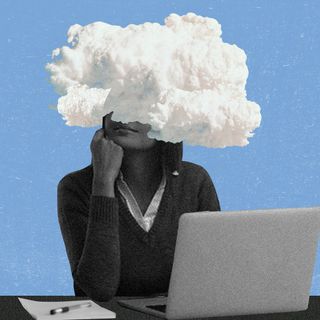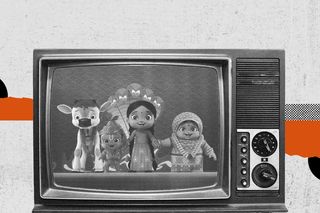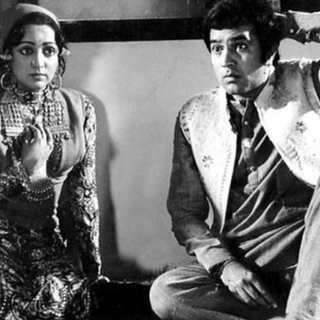
A Children’s Show On Hindu Mythology Is Being Used To Promote India’s ‘Cultural Diversity’
With ‘Mighty Little Bheem,’ the promotion uses the “indigenous” framing to conflate mythology with diversity, which may do more harm than good.

This month, in a bid to celebrate India’s 75th year of independence, UNESCO and Netflix have joined hands to promote India’s cultural diversity through a children’s show. The show in question? Mighty Little Bheem.
“We are so proud to partner with UNESCO. They are working tirelessly to focus on the lesser-known arts, cultures, traditions, crafts,” said Monika Shergill, VP, Content, Netflix India, in an interview with The Telegraph.
This begs the question: lesser-known to whom, in a country whose children’s TV staple for years — indeed, what feels like centuries — was Chhota Bheem which translates, quite literally, to ‘little Bheem’?
“We are trying to ensure that three-six-year-old kids understand the value of their heritage so that when they get older, they help preserve it. India’s heritage is a bottomless reservoir and sometimes it becomes very difficult to preserve it,” quipped Eric Falt, the UNESCO representative to Bhutan, India, Maldives, and Sri Lanka, in the same interview.
This begs another question: what is India’s heritage, and who decides?
The dubious claim that a show about a Hindu mythological character named Bheem is in any way original or lesser-known aside, the framing of Mighty Little Bheem in the language of promoting India’s “cultural diversity” to the world is problematic at best, and outright harmful at worst. But the claims go further than just that. Take a closer look at Falt’s understanding of “Indian culture” in the conversation about the show:
“We have a lot of hope that’s based on the existing popularity of Mighty Little Bheem; we can make people in India, as well as those globally, better aware of Indian culture in a variety of ways that they aren’t perhaps familiar with.”
Or take Shergill’s framing of the show’s premise in the language of indigeneity:
“It’s meant for an audience which can see a very cute Bheem in his indigenous setting, celebrating festivals unique to this country. We have started on Independence Day with the theme of freedom and diversity… The specials we do will focus on tourism, the harvest festivals of India, and, of course, big festivals like Holi and Diwali.”
Related on The Swaddle:
UGC Drafts New History Syllabus To Include “Idea of Bharat,” Chapters on Religious Texts
If this all vaguely resembles a long WhatsApp message forwarded by a particularly jingoistic relative claiming UNESCO’s seal of approval on Hindu iconography as Indian, it’s because it isn’t too far off the mark. When “cultural diversity”, “Indian culture”, “heritage”, “indigenous setting” and “Mighty Little Bheem” are all mashed together in one Independence day campaign, the results are not likely to be all that different. Used this way over and over, words like these have arguably lost all meaning and have become bland, chewed out the pulp of nothingness. This perhaps explains why UNESCO and Netflix find it so easy to use them unquestioningly — because they mean very little, but still carry weight in terms of marketing.
But for what it’s worth, restoring meaning to these words is necessary to avoid submitting to cultural erasure. What Netflix and UNESCO both get fundamentally wrong at the very outset is the definition of diversity. When a story is drawn from the mythology of the dominant caste in a country, it represents the very antithesis of diversity. So far, no plans have yet been announced to develop programs focussing on actually indigenous folktales or other religious or regional stories and myths — which makes this diversity campaign tokenistic and shallow. Moreover, the words used to describe the show’s significance reflect the worrying new trend of couching majoritarian rhetoric in social justice language to make it palatable to young “woke” people.
The word “indigenous” used to describe the character of Bheem, for instance, is a particular affront, given the history of violence and erasure that actual indigenous tribal communities in India have faced throughout its history. Successive Indian governments ever since formal Independence have only worked to dehumanize tribal communities by forcing them out of their homes, villainizing them as radicals, taking over their land, and seizing control of the resources on which they depend — all in the name of national development.
Not to mention the lack of references or plans to unveil shows with stories about the lives and experiences of religious communities and minorities in India that celebrate their festivals and traditions — that is, the actual diversity.
To then talk about “heritage” in the context of a (dominant-caste) Hindu mythological show meant to teach Indian children about “their” culture thus endorses the idea that there is one, monolithic culture that represents all of India. To represent a limited selection of (Hindu) festivals through the character of Bheem erases any regional or alternative narratives that reclaim or reject these very festivals within India itself. Finally, to promote all of this in a children’s show is a particularly insensitive move — especially against the backdrop of school curricula removing the history of diversity and cultural references that do not conform to majoritarian ideas.
If this partnership represents anything, then, it is the co-option of the language of diversity and heritage to promote a very singular, myopic view of what constitutes Indian culture — in a country that contains multitudes too vast in number to even fathom. To do so as an Independence day campaign is insidious.
If the streaming executives and UNESCO representatives are honest with themselves and with the public, they would admit to painting over a vastly intricate patchwork quilt to neatly package and sell the idea of culture to a Western audience. After all, when capitalism and majoritarian nationalism meet globalization, cultural diversity is nothing but a brand that is palatable and easy to consume for the Western gaze. The question we should ask ourselves is perhaps why, on the 75th anniversary of independence, India must reduce itself thus — or indeed, what independence even means anymore.
Rohitha Naraharisetty is a Senior Associate Editor at The Swaddle. She writes about the intersection of gender, caste, social movements, and pop culture. She can be found on Instagram at @rohitha_97 or on Twitter at @romimacaronii.
Related


Why We Don’t Recollect Words at the ‘Tip of the Tongue’
